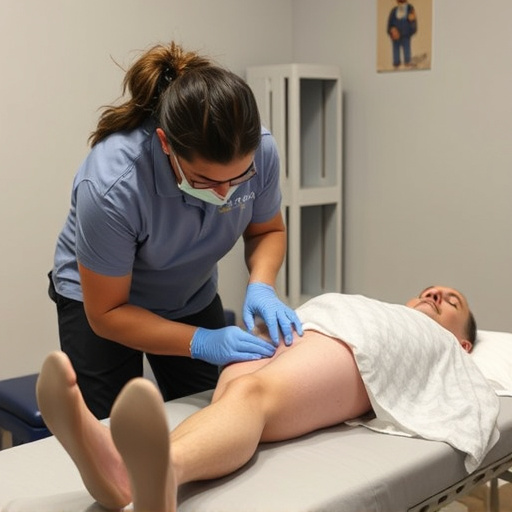The ADA Accessibility Guidelines are crucial for healthcare websites, focusing on mobile-friendly design, enhanced color contrast, keyboard navigation, and alternative image text to ensure inclusivity. Complying with these guidelines improves user experience, boosts local SEO Fort Lauderdale prospects, and caters to the growing trend of smartphone users accessing healthcare services. Implement high contrast text, forms labeling, and keyword research tools for a fully accessible, mobile-optimized medical website that serves diverse patients effectively.
In today’s digital age, a medical website is not just a virtual business card but a crucial tool for patient engagement. To ensure inclusivity and compliance, designing healthcare websites with ADA (Americans with Disabilities Act) accessibility standards is essential. This article explores key aspects of creating mobile-friendly medical sites, from understanding stringent ADA guidelines to implementing accessible features. We’ll guide you through best practices and tools that make your website a model of user-centric design, catering to diverse needs, especially in the context of mobile-friendly website design.
- Understanding ADA Accessibility Guidelines for Healthcare Websites
- Key Considerations for Mobile-Friendly Medical Website Design
- Implementing Accessible Features: Best Practices and Tools
Understanding ADA Accessibility Guidelines for Healthcare Websites

The ADA (Americans with Disabilities Act) Accessibility Guidelines play a pivotal role in ensuring that healthcare websites are inclusive and accessible to all users, including those with disabilities. These guidelines provide a comprehensive framework for creating digital content that can be easily navigated and understood by everyone. For healthcare providers, adhering to these standards is not just a legal requirement but also a way to enhance user experience and boost local search visibility in Fort Lauderdale.
By implementing the ADA guidelines, website designers and developers can make crucial changes like improving color contrast for better visual accessibility, ensuring proper keyboard navigation for users who cannot use a mouse, and providing alternative text descriptions for images. Additionally, these guidelines emphasize the importance of mobile-friendly website design, which is essential given that many users now access healthcare information and services via their smartphones. Adopting these practices not only ensures compliance but also fosters a positive impression among local SEO Fort Lauderdale prospects by demonstrating a commitment to serving a diverse patient base effectively.
Key Considerations for Mobile-Friendly Medical Website Design

In today’s digital era, a medical website’s success is heavily tied to its mobile-friendly design. With an increasing number of users accessing healthcare information via smartphones and tablets, ensuring your site is optimized for these devices is not just a best practice but a necessity. Key considerations include responsive web design, where the layout adapts seamlessly to different screen sizes, making navigation intuitive and content easily consumable. Fast loading times are also crucial; patients often have limited patience, especially when dealing with sensitive health matters.
A professional web design that incorporates these mobile-friendly elements not only enhances user experience but also improves organic SEO services. By prioritizing mobile users, your site is more likely to secure higher search engine rankings, driving more relevant traffic and potentially increasing patient inquiries for your healthcare services in Dallas.
Implementing Accessible Features: Best Practices and Tools

Implementing accessible features is paramount when designing a medical website that caters to all users, especially those with disabilities. Best practices include ensuring high contrast between text and background, providing alternative text for images, using headings and labels for forms and navigation, and incorporating keyboard navigation to accommodate users who cannot use a mouse. These strategies not only adhere to ADA guidelines but also enhance the overall user experience by making your website more mobile-friendly and accessible from various devices.
Several tools are available to streamline this process. Keyword research services can help identify accessibility-related terms patients might use when searching for medical information, guiding content creation. Local SEO services can optimize site structure and metadata to improve discoverability among users in specific geographic areas. Moreover, an SEO audit service can evaluate your website’s current compliance and provide actionable recommendations to bridge any gaps, ensuring your medical website is not only informative but also fully accessible.
In the digital age, ensuring your medical website design meets ADA accessibility standards is not just a legal requirement but also a crucial strategy for creating an inclusive and user-friendly experience. By understanding the guidelines, considering mobile-friendliness, and implementing accessible features with best practices and suitable tools, healthcare providers can significantly enhance their online presence. A mobile-friendly website design that adheres to these standards fosters better patient engagement and accessibility, ultimately improving the overall user journey.














